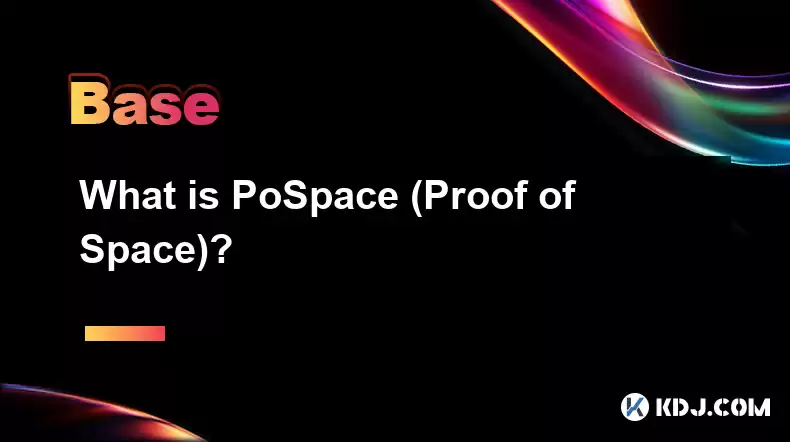-
 Bitcoin
Bitcoin $115100
1.27% -
 Ethereum
Ethereum $3675
2.71% -
 XRP
XRP $2.995
1.45% -
 Tether USDt
Tether USDt $1.000
0.02% -
 BNB
BNB $769.8
2.64% -
 Solana
Solana $168.0
3.25% -
 USDC
USDC $0.9999
-0.01% -
 TRON
TRON $0.3371
1.48% -
 Dogecoin
Dogecoin $0.2051
3.36% -
 Cardano
Cardano $0.7394
2.30% -
 Hyperliquid
Hyperliquid $38.15
0.42% -
 Stellar
Stellar $0.3966
-0.36% -
 Sui
Sui $3.486
2.93% -
 Chainlink
Chainlink $16.72
2.52% -
 Bitcoin Cash
Bitcoin Cash $568.0
4.36% -
 Hedera
Hedera $0.2440
2.59% -
 Ethena USDe
Ethena USDe $1.001
0.04% -
 Avalanche
Avalanche $22.16
2.06% -
 Litecoin
Litecoin $119.1
-0.73% -
 UNUS SED LEO
UNUS SED LEO $8.991
0.04% -
 Toncoin
Toncoin $3.232
-0.39% -
 Shiba Inu
Shiba Inu $0.00001233
2.82% -
 Uniswap
Uniswap $9.717
2.53% -
 Polkadot
Polkadot $3.664
1.85% -
 Dai
Dai $1.000
0.01% -
 Monero
Monero $281.2
-3.89% -
 Bitget Token
Bitget Token $4.350
1.55% -
 Cronos
Cronos $0.1428
5.07% -
 Pepe
Pepe $0.00001050
3.68% -
 Aave
Aave $262.3
3.54%
What is PoSpace (Proof of Space)?
PoSpace uses unused hard drive space to validate blockchain transactions, offering an energy-efficient alternative to PoW and PoS, making it more accessible to participants.
Apr 07, 2025 at 06:07 pm

What is PoSpace (Proof of Space)?
Proof of Space (PoSpace) is a consensus mechanism used in blockchain networks that leverages unused storage space on participants' hard drives to validate transactions and secure the network. Unlike Proof of Work (PoW), which requires significant computational power, or Proof of Stake (PoS), which relies on the amount of cryptocurrency held, PoSpace focuses on the physical storage capacity that users are willing to allocate to the network. This approach aims to be more energy-efficient and accessible to a broader range of participants.
How Does PoSpace Work?
In a PoSpace system, participants, often referred to as "farmers," allocate a portion of their hard drive space to store cryptographic data. This data is used to prove that the space is indeed being used for the network's benefit. The process involves the following steps:
- Initialization: Farmers initialize their storage space by filling it with cryptographic data. This data is generated using a specific algorithm that ensures it is verifiable and unique.
- Challenge-Response: The network periodically issues challenges to the farmers. These challenges require farmers to provide proof that they have the allocated space filled with the correct data.
- Verification: The responses from the farmers are verified by the network. If the proof is valid, the farmer is eligible to participate in the consensus process and potentially earn rewards.
Advantages of PoSpace
PoSpace offers several advantages over other consensus mechanisms:
- Energy Efficiency: Unlike PoW, which consumes vast amounts of electricity, PoSpace uses minimal energy since it relies on existing storage space rather than computational power.
- Accessibility: PoSpace allows more people to participate in the network since it does not require specialized hardware. Anyone with spare storage space can become a farmer.
- Decentralization: By lowering the barrier to entry, PoSpace can lead to a more decentralized network, as more individuals can participate without significant investment.
Challenges and Considerations
While PoSpace has its benefits, it also faces certain challenges:
- Storage Costs: Although less expensive than specialized mining hardware, the cost of hard drives can still be a barrier for some potential participants.
- Data Integrity: Ensuring the integrity of the data stored on the network is crucial. Any corruption or loss of data can affect the network's security and reliability.
- Scalability: As the network grows, managing and verifying the large amounts of storage space can become complex and resource-intensive.
Examples of PoSpace in Use
Several blockchain projects have implemented PoSpace as their consensus mechanism:
- Chia Network: Chia is one of the most well-known projects using PoSpace. It aims to create a more sustainable and decentralized blockchain by leveraging unused storage space.
- Burstcoin: Burstcoin was one of the first cryptocurrencies to use PoSpace. It uses a variant called Proof of Capacity (PoC), which is similar to PoSpace but with some differences in implementation.
How to Participate in a PoSpace Network
Participating in a PoSpace network involves several steps:
- Choose a PoSpace Blockchain: Select a blockchain that uses PoSpace, such as Chia or Burstcoin.
- Download and Install Software: Download the official software for the chosen blockchain. For Chia, you would download the Chia Blockchain software; for Burstcoin, you would use the Burst Reference Software.
- Allocate Storage Space: Decide how much storage space you want to allocate to the network. Ensure that the hard drive you use has enough free space.
- Initialize the Space: Use the software to initialize the allocated space. This process will fill the space with cryptographic data.
- Start Farming: Once the space is initialized, you can start farming. The software will automatically respond to network challenges and attempt to earn rewards.
Security Considerations in PoSpace
Security is a critical aspect of any blockchain network, and PoSpace is no exception. Here are some security considerations:
- Data Encryption: Ensure that the data stored on your hard drive is encrypted to protect against unauthorized access.
- Regular Backups: Regularly back up your data to prevent loss in case of hardware failure.
- Network Security: Use secure connections and keep your software up to date to protect against network attacks.
Economic Implications of PoSpace
The economic model of PoSpace can have significant implications for participants and the broader cryptocurrency ecosystem:
- Reward Distribution: The way rewards are distributed in a PoSpace network can affect the economic incentives for participants. A fair and transparent reward system is crucial for maintaining network participation.
- Storage Market Dynamics: The demand for storage space in PoSpace networks can influence the market for hard drives and other storage solutions.
- Token Economics: The design of the cryptocurrency's token economics, including factors like inflation rate and supply cap, can impact the value and utility of the tokens earned through PoSpace.
Frequently Asked Questions
Q: Can I use an SSD for PoSpace farming?
A: Yes, you can use an SSD for PoSpace farming, but it's generally more cost-effective to use HDDs due to their lower cost per gigabyte. SSDs are faster, which can be beneficial for initializing the space, but the cost may outweigh the benefits for most users.
Q: How much storage space do I need to start farming in a PoSpace network?
A: The amount of storage space required can vary depending on the specific blockchain. For Chia, for example, you might start with a few terabytes, but more space increases your chances of earning rewards. It's best to check the specific requirements of the blockchain you're interested in.
Q: Is PoSpace more environmentally friendly than PoW?
A: Yes, PoSpace is generally considered more environmentally friendly than PoW because it does not require the same level of energy consumption. PoSpace uses existing storage space, which is less energy-intensive than the computational power needed for PoW.
Q: Can I participate in multiple PoSpace networks simultaneously?
A: Yes, you can participate in multiple PoSpace networks as long as you have enough storage space to allocate to each network. However, managing multiple networks may require more technical expertise and resources.
Disclaimer:info@kdj.com
The information provided is not trading advice. kdj.com does not assume any responsibility for any investments made based on the information provided in this article. Cryptocurrencies are highly volatile and it is highly recommended that you invest with caution after thorough research!
If you believe that the content used on this website infringes your copyright, please contact us immediately (info@kdj.com) and we will delete it promptly.
- Avalanche vs. Ruvi AI: Daily Sales Tell a Story of Crypto Disruption
- 2025-08-07 06:29:35
- DeSoc: The Crypto to Buy Now for a Decentralized Future (and Maybe 43x Gains!)
- 2025-08-07 06:50:16
- Arctic Pablo Coin: Riding the Meme Coin Wave with a Deflationary Twist
- 2025-08-07 07:18:13
- XRP Price Skyrocket? Decoding the Cryptocurrency's Next Move
- 2025-08-07 07:31:50
- Meme Coins in August 2025: Riding the Rally Wave
- 2025-08-07 06:56:08
- Big Whales, Altcoins, and Heavy Transactions: What's Moving the Crypto Market?
- 2025-08-07 06:29:35
Related knowledge

What is the difference between CeFi and DeFi?
Jul 22,2025 at 12:28am
Understanding CeFi and DeFiIn the world of cryptocurrency, CeFi (Centralized Finance) and DeFi (Decentralized Finance) represent two distinct financia...

How to qualify for potential crypto airdrops?
Jul 23,2025 at 06:49am
Understanding What Crypto Airdrops AreCrypto airdrops refer to the distribution of free tokens or coins to a large number of wallet addresses, often u...

What is a crypto "airdrop farmer"?
Jul 24,2025 at 10:22pm
Understanding the Role of a Crypto 'Airdrop Farmer'A crypto 'airdrop farmer' refers to an individual who actively participates in cryptocurrency airdr...

What is the difference between a sidechain and a Layer 2?
Jul 20,2025 at 11:35pm
Understanding the Concept of SidechainsA sidechain is a separate blockchain that runs parallel to the main blockchain, typically the mainnet of a cryp...

What is the Inter-Blockchain Communication Protocol (IBC)?
Jul 19,2025 at 10:43am
Understanding the Inter-Blockchain Communication Protocol (IBC)The Inter-Blockchain Communication Protocol (IBC) is a cross-chain communication protoc...

How does sharding improve scalability?
Jul 20,2025 at 01:21am
Understanding Sharding in BlockchainSharding is a database partitioning technique that is increasingly being adopted in blockchain technology to enhan...

What is the difference between CeFi and DeFi?
Jul 22,2025 at 12:28am
Understanding CeFi and DeFiIn the world of cryptocurrency, CeFi (Centralized Finance) and DeFi (Decentralized Finance) represent two distinct financia...

How to qualify for potential crypto airdrops?
Jul 23,2025 at 06:49am
Understanding What Crypto Airdrops AreCrypto airdrops refer to the distribution of free tokens or coins to a large number of wallet addresses, often u...

What is a crypto "airdrop farmer"?
Jul 24,2025 at 10:22pm
Understanding the Role of a Crypto 'Airdrop Farmer'A crypto 'airdrop farmer' refers to an individual who actively participates in cryptocurrency airdr...

What is the difference between a sidechain and a Layer 2?
Jul 20,2025 at 11:35pm
Understanding the Concept of SidechainsA sidechain is a separate blockchain that runs parallel to the main blockchain, typically the mainnet of a cryp...

What is the Inter-Blockchain Communication Protocol (IBC)?
Jul 19,2025 at 10:43am
Understanding the Inter-Blockchain Communication Protocol (IBC)The Inter-Blockchain Communication Protocol (IBC) is a cross-chain communication protoc...

How does sharding improve scalability?
Jul 20,2025 at 01:21am
Understanding Sharding in BlockchainSharding is a database partitioning technique that is increasingly being adopted in blockchain technology to enhan...
See all articles

























































































